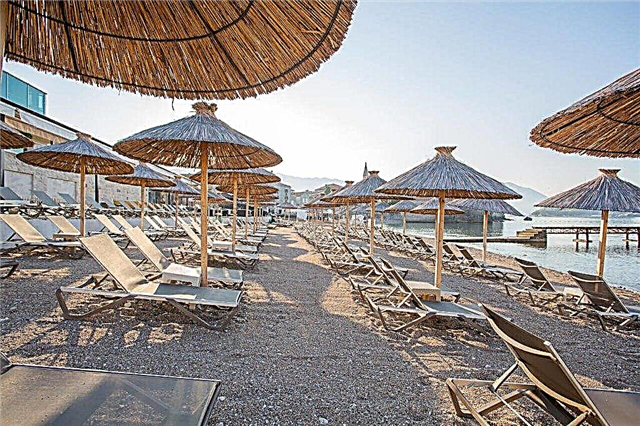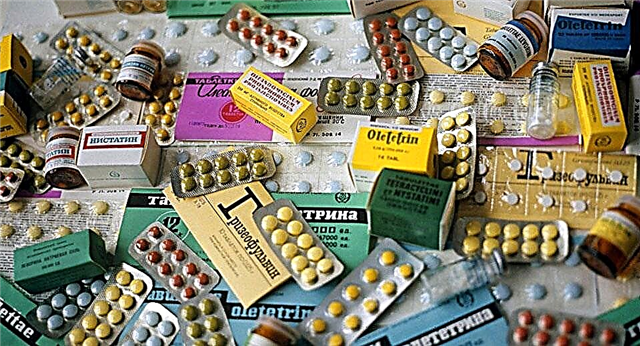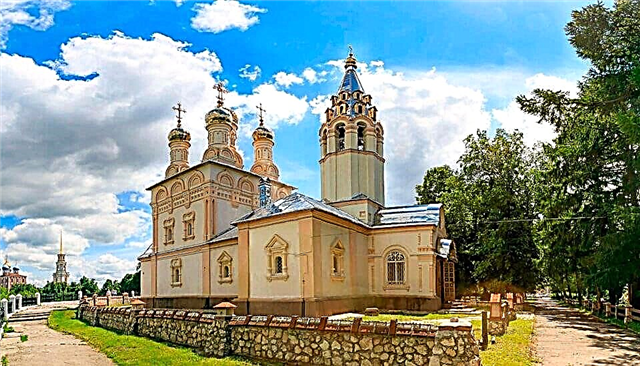Address: Russia, Moscow, Orekhovo-Borisovo Severnoe district (metro stations Orekhovo, Tsaritsyno, Domodedovskaya)
Start of construction: 1776 year
Main attractions: Big bridge over the ravine, Figured bridge, Cavalier buildings, Church of the Icon of the Mother of God "Life-Giving Spring", Bread House (Kitchen Building), Grand Palace, Arch-gallery, Small Palace, Middle Palace (Opera House), Figured (Grape) Gates, Greenhouse bridge
Architect: IN AND. Bazhenov, M.F. Kazakov
Coordinates: 55 ° 36'58.1 "N 37 ° 40'55.6" E
Cultural heritage site of the Russian Federation
Content:
The history of the estate
The Tsaritsyno Estate is a beautiful monument of antiquity reflecting the history and culture of Moscow in the 18th – 19th centuries. It is located in the south of the city, on Dolskaya Street. Previously, the village of Chornaya Gryaz was located in this area. In 1663 it became the property of the Streshnev family, and later - the Golitsyn family. Soon after the plot of Princess Sophia was revealed, the village was confiscated from its former owners, and Peter I himself handed it over to Prince Dimitri Cantemir.

General view of the Tsaritsyno estate
The new owner immediately began renovations. Instead of a dilapidated church, a one-domed stone church was built on the estate, consecrated in honor of the iconographic image of the Life-Giving Source.
In addition, a project was developed and the construction of the palace began. After a short time, an unusual wooden structure, made in the traditions of Chinese architecture, appeared in the park area.

Grand Palace
In 1775, Prince Kantemir sold his estate to the Russian empress Catherine II, who calls her acquisition Tsaritsyno. She entrusted the work on the creation of the new residence to the most famous architect of Russia - Vasily Ivanovich Bazhenov.
Based on the wishes of the Empress, he developed two versions of the project for rebuilding the estate, one of which received the highest approval.

Bread House (Kitchen building)
10 years have passed. Catherine II arrived at the estate when the construction work was already completed. She did not like the buildings of the famous architect at all, and she gave the order to dismantle them. To continue the construction of the estate was entrusted to the architect Matvey Fedorovich Kazakov, and for the next 10 years he was engaged in the construction of a new palace. However, the empress never lived here. When she died, construction stopped. In its unfinished form, after a few years, the buildings began to turn into ruins.

Small Palace
Why did the palace suffer such a sad fate? According to an ancient legend, the offended Bazhenov paid the Moldavian gypsy sorcerer Ione with gold to put a spell on the estate of Catherine II, who rejected his architectural creation.
And the sorcerer, after completing his work, promised Bazhenov that further attempts to build the palace would never be crowned with success. Indeed, the palace complex with the royal name was never completed.

Middle Palace (Opera House)
The times of change came with the transfer of the estate plot into the possession of Emperor Alexander I. All work on its arrangement was entrusted to the Expedition of the Kremlin building, and PS was appointed the chief chief. Valuev. And again, the work was carried out for a decade. When they were completed, the territory of the Tsaritsyno estate was significantly transformed. The English Garden and magnificent greenhouses were put in order, the dam and pond were restored, and various pavilions, graceful bridges and antique grottoes appeared in the park. Due to the arrangement of baths in the ponds, it was now possible to swim.
In 1803, the building of the Third Cavalry Corps was turned into a hotel. Guests of Moscow stayed here, wishing to appreciate the beauty of Tsaritsyno. Since that time, the estate again aroused the interest of the noble and noble public, who were looking for new places for recreation and entertainment.

Curly (Grape) gate
The life of the estate in Soviet and post-Soviet times
At the end of the 19th century, the Tsaritsyn estate became the most visited summer cottage in Moscow. The ancient settlement of Chornaya Gryaz has turned into a dacha settlement with the name "New Tsaritsyno". At one time popular writers and poets Fyodor Mikhailovich Dostoevsky, Ivan Andreevich Bunin, Fyodor Ivanovich Tyutchev and Anton Pavlovich Chekhov rested here. By 1890, Tsaritsyno consisted of more than two hundred dachas, and at the beginning of the last century, their number exceeded a thousand.

Church of the Most Holy Theotokos Life-Giving Spring
In the 1920s, the palace and park were in the possession of Glavnauka, and later turned into a museum subdivision, in charge of which the Moscow City Department of Education. In 1993 the estate was given the status of a museum-reserve.
Today the estate is the largest museum and exhibition, natural, cultural, historical and tourist complex of the Russian capital. It offers its visitors excursions, entertainment and educational programs. In the premises of the estate and on the palace grounds, city festivals, performances and musical concerts are often held.

First Cavalry Corps
In addition to participating in cultural programs, in summer Tsaritsyno visitors can take a ride on segways and boats. In winter, an ice slide awaits for those who love tubing. In the warm season, the "Singing" fountain works for the guests of the estate, which attracts both children and adults with a spectacular light and music show. For lovers of active rest, there is a rope park. The route for adults is laid at an altitude of 15 m. From here a beautiful panorama of the Tsaritsyn pond and the adjacent alleys opens up.

Second Cavalry Corps
Manor greenhouses
A flower farm appeared here in the 18th century, when the surrounding lands were owned by Kantemir. In the 2000s, the old buildings were restored. In the first greenhouse building, unusual plants of the tropics and subtropics are grown - various types of palm trees, beautifully blooming Chinese hibiscus, hybrid fuchsia and giant passionflower.
In the Grape Greenhouse, all conditions have been created for fruiting plants - grapes and citrus fruits, which were once supplied to the royal table. The second building collected spicy and essential oil crops. The fragrant "bouquet" of this body is complemented by pineapples and figs, oregano and rue.

Third Cavalry Corps
The main attractions of the estate
Kazakov erected the Great Tsaritsyn Palace on the site of the dismantled buildings of Bazhenov, but only slightly deviated from the plan of the first architect. The palace building consists of two square wings. The right one was intended for the Empress's chambers, the left one for Tsarevich Pavel.
Despite the fact that features of pseudo-Gothic are noticeable in the external appearance of the palace, the architectural solution of the main building of the estate does not deviate from the canons of classicism. This is manifested in the balance of proportions, strict symmetry, monumentality and three-part division of the facades. The finishes of the palace towers resemble the towers of the Moscow Kremlin.

Figured bridge
Another large-scale Bazhenov building that has survived to this day is the Bread House, which is also known as the "Kitchen Building". This name appeared because of two emblems resembling a loaf of bread and a salt shaker. An interesting monogram is placed above them, which consists of the letters "X" and "C". It is usually deciphered as "bread" and "salt". The letter "C" looks like a kalach, "X" - like crossed rulers, hinting that Bazhenov belonged to Freemasonry. Working on the Bread House, the Russian architect showed himself to be a real connoisseur of culinary technologies. According to his project, there were 8 kitchens in the building. Today, the Khlebny Dom houses all the main museum expositions of the estate.

Big bridge
In Tsaritsyno there is also a shrine - a temple consecrated in honor of the iconographic image of the Mother of God "Life-Giving Source" (1722). It stands in the north of the palace square. It is interesting that the ancient temple is the only building that has survived from the first, Kantemirovsky estate, which the architect Bazhenov decided to include in his palace ensemble.
In the 1750s-1760s, the church was reconstructed, adding to it a northern side-altar in honor of the great martyr Dmitry of Thessaloniki. In the 80s of the XIX century, the temple was rebuilt again. Thanks to the skillful actions of the architect P.N. The avalanche, a shrine on the south side, was replenished with an aisle, and its refectory was expanded. The bell tower of the temple has also undergone changes.

Gallery with arch
Since the 18th century, the Great Bridge has survived, built across a deep ravine. Despite its utilitarian purpose, it is richly decorated. Pointed arches adorning its central part copy the portals of Gothic cathedrals. Zigzag ornamentation, like a "belting" cornice, rosettes and lucarnes create a unique decoration. Bazhenov endowed the bridge with a large number of Masonic symbols.
Palace landscape park of the estate
After visiting the palace complex, you can take a walk in Tsaritsyn Park. Work on its breakdown began in 1775. At that time, the park was planted with Siberian cedars and larch trees. Bazhenov was responsible for the development of the park site. Birches predominated in the former Kantemirov estate. Bazhenov did not cut down the Birch Alley of the estate, but made it the main axis of his ensemble.

Monument to architects Vasily Bazhen and Matvey Kazakov
In the estate park from the XI-XII centuries, burial mounds of Vyatichi have been preserved. The first research work on their study was carried out in the 19th century under the leadership of I.E. Zabelina. Additional archaeological excavations took place here in 1944. Experts have found many unusual items in the mounds, including unique tools. Later, these findings became the basis of the archaeological collection of the museum-reserve.











